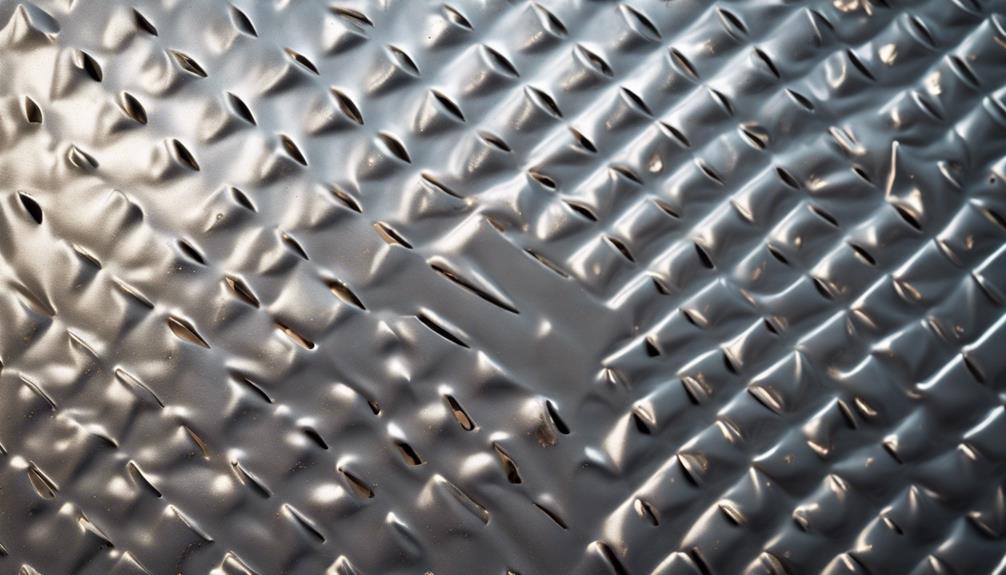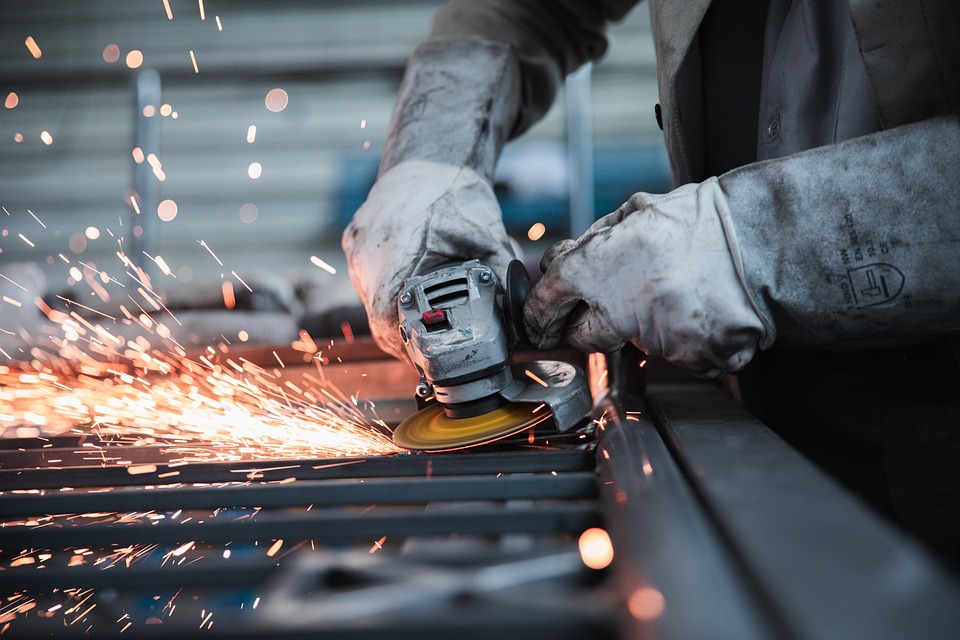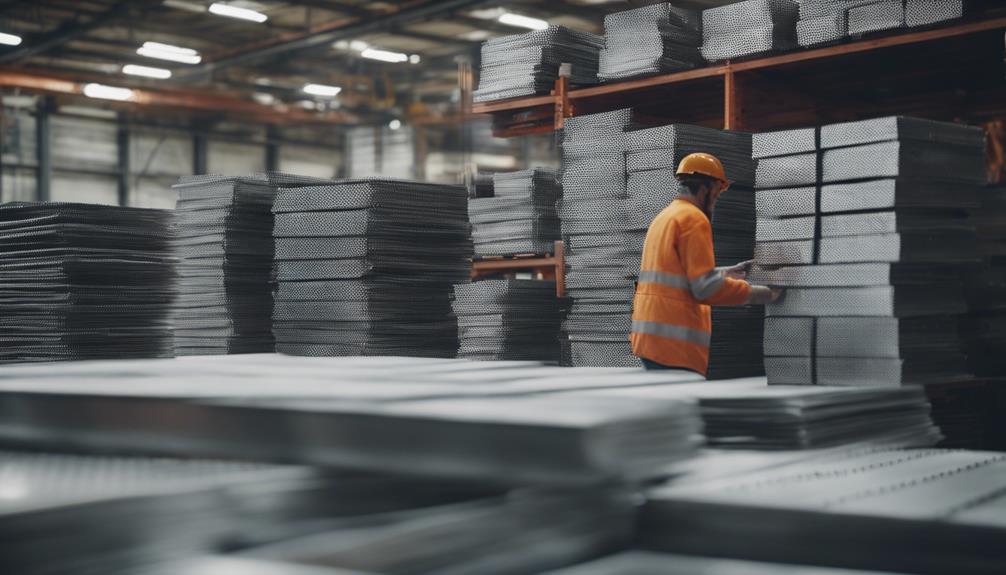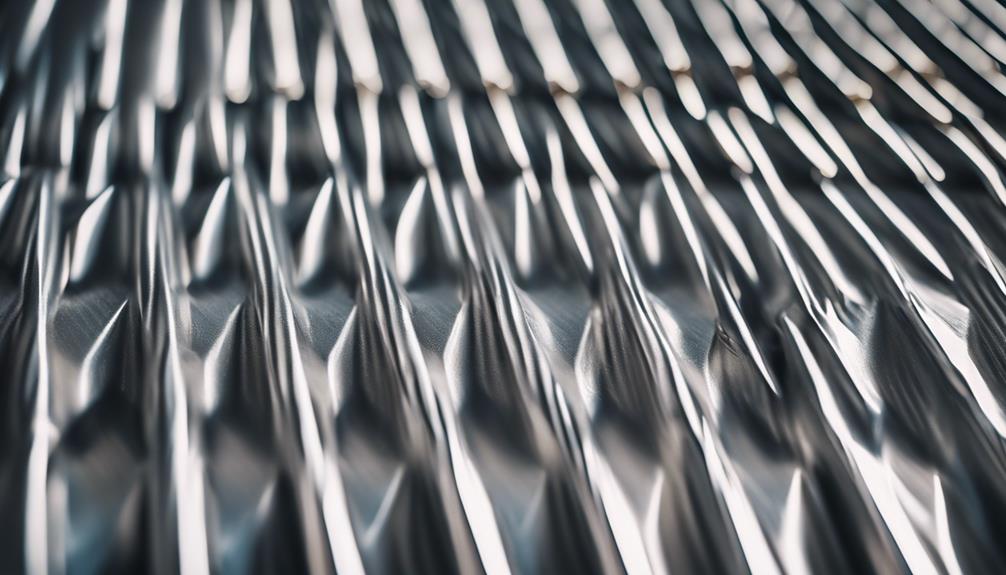Steel Plate A36 is a versatile metal sheet offering a hot-rolled appearance with specific characteristics such as a blue/gray hue, a yield strength of 36,000 psi, and a tensile strength of 58,000 psi. It features fair bending and forming properties, making it suitable for a variety of applications in construction and manufacturing. Steel Plate A36 also exhibits good machining and grinding capabilities, excellent welding abilities, and a magnetic nature, along with a Brinell Hardness of 112. Understanding the nuances of this metal sheet is essential for selecting the right material for your project needs.
Key Takeaways
- Steel Plate A36 is a versatile metal sheet option with excellent welding capabilities and magnetic properties.
- It offers a yield strength of 36,000 psi and tensile strength of 58,000 psi, suitable for various applications.
- Available in different stock sizes from 1 x 1 to 5 x 10, providing flexibility for project requirements.
- Fair bending and forming properties make it ideal for construction and manufacturing projects.
- Requires protective coatings due to poor corrosion resistance but offers cost-effective and reliable performance.
Steel Plate A36 Specifications
Steel Plate A36, as per ASTM specifications, exhibits a distinctive hot-rolled appearance with a blue/gray hue and a slightly grainy texture. This type of steel, known for its versatility, has a yield strength of 36,000 psi and a tensile strength of 58,000 psi. With an elongation capability of 23% in 2 inches, Steel Plate A36 is suitable for various applications. It boasts a Brinell Hardness of 112, making it a durable choice. Stock sizes for Steel Plate A36 include 1×1, 1×2, 2×2, 2×4, 4×4, 4×8, and 5×10, with slight variations up to 1/8 in size. These specifications make Steel Plate A36 a popular option in the construction and manufacturing industries.
Characteristics of Steel Plate A36
Having established the specifications of Steel Plate A36, it is imperative to understand the distinct characteristics that define this versatile material. ASTM A36 Steel Plate offers fair bending and forming properties, making it suitable for various applications. Additionally, it exhibits good machining and grinding capabilities, enhancing its usability in manufacturing processes. However, the corrosion resistance of Steel Plate A36 is considered poor, requiring protective coatings in corrosive environments. On the other hand, its excellent welding abilities make it a preferred choice for structural projects. With a Brinell Hardness of 112, Steel Plate A36 is magnetic and has a melting point of 2600F, further contributing to its suitability for a wide range of industrial applications.
Mechanical Properties of A36 Steel
What fundamental mechanical characteristics distinguish A36 steel in industrial applications? A36 steel, classified as low carbon, exhibits a yield strength of 36,000 psi and a tensile strength of 58,000 psi, making it a versatile choice for various structural projects. Its elongation of 23% in 2 inches allows for flexibility without compromising strength. Additionally, A36 steel boasts a Brinell hardness of 112, ensuring durability and resistance to indentation. These mechanical properties, combined with its magnetic nature, make A36 steel a popular choice in industries requiring reliability and strength, such as construction, manufacturing, and infrastructure. When compared to materials like Cold Rolled Steel, Aluminum Sheet, and Galvanized Steel, A36 steel's unique combination of strength, ductility, and hardness sets it apart.
Available Stock Sizes for A36 Steel
A36 Steel is available in various stock sizes, ranging from 1 x 1 to 5 x 10, allowing for flexibility in meeting different project requirements. These stock sizes are readily available for order in any quantity and size, offering assurance to customers. The measurements for A36 Steel stock sizes are determined by Thickness X Width X Length, with the stock sizes possibly varying by up to 1/8 of an inch. Delivery options for A36 Steel stock sizes are flexible and can be arranged to any location. This availability of stock sizes guarantees that customers can easily find the right fit for their specific project needs, making the ordering and delivery process efficient and convenient.
How to Measure Steel Plate A36
To accurately measure a Steel Plate A36, one must evaluate its thickness, width, and length using appropriate tools such as a caliper, ruler, or tape measure. The thickness (A) can be determined using a caliper or ruler, while the width and length can be measured with a tape measure or ruler. Double-check all measurements to guarantee accuracy when determining the dimensions of the Steel Plate A36. By following these steps and using the right tools, you can obtain precise measurements for the Steel Plate A36, allowing for better planning and utilization of the material in various projects.
Benefits of Steel Plate A36
Steel Plate A36 is renowned for its exceptional welding capabilities, making it a preferred choice for various fabrication and construction projects. With a tensile strength of 58,000 psi, Steel Plate A36 provides good structural support and durability. Its fair bending characteristics allow for versatility in applications, while being magnetic aids in easy identification and handling. Available in various stock sizes like 1×1, 2×2, 4×4, and 5×10, Steel Plate A36 offers flexibility to meet project requirements efficiently. Whether for structural components or general fabrication needs, Steel Plate A36 proves to be a reliable and cost-effective option for those seeking a material with excellent welding properties and reliable performance in various applications.
Frequently Asked Questions
What Is the Cheapest Type of Sheet Metal?
The most budget-friendly option in the market is hot rolled steel sheet. It provides a cost-effective solution for various applications without compromising quality. Available in different thickness options, it is a versatile choice for projects with budget constraints.
What Is a Sheet of Metal Called?
A sheet of metal, also known as sheet metal, is a versatile material available in various thicknesses and compositions like steel, aluminum, and copper. It serves industrial purposes and offers a blend of strength, design flexibility, and durability.
What Are the Types of Sheet Metal?
Various types of sheet metal include hot rolled steel, cold rolled steel, and galvanized steel, each offering unique properties and applications. Hot rolled steel is economical, cold rolled steel offers higher quality, and galvanized steel provides superior corrosion protection for outdoor and interior design projects.
How Thick Is 16 Gauge Steel?
16 gauge steel has a thickness of approximately 0.0598 inches. It is commonly used in applications requiring a balance of strength and formability. This thickness is ideal for automotive panels, tool boxes, and metal furniture.










